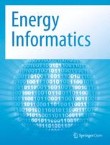2022 Citation Impact
0.808 - SNIP (Source Normalized Impact per Paper)
0.531 - SJR (SCImago Journal Rank)
2023 Speed
9 days submission to first editorial decision for all manuscripts (Median)
52 days submission to accept (Median)
2023 Usage
394,833 downloads
17 Altmetric mentions
